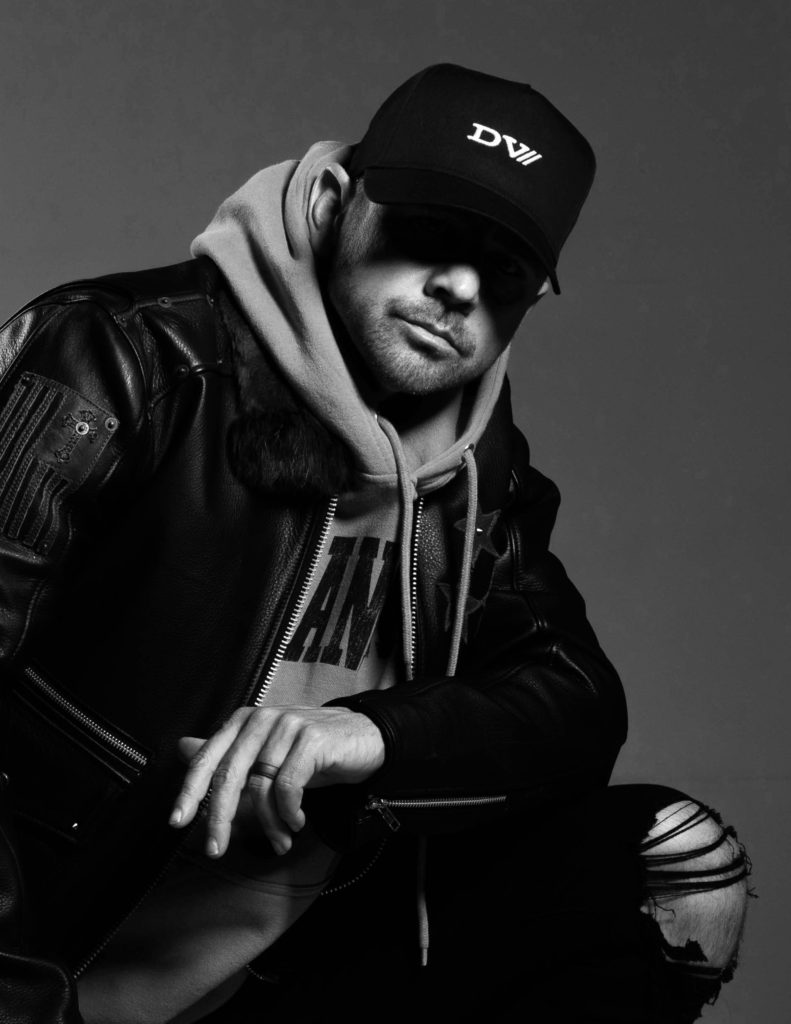GEAR & TOOLS:
Great content needs good audio. In this 5 minute read we will go over the types of mics youll need to create a high quality production.
MICROPHONES FOR FILMMAKING
Have you ever watched a video with stunning visuals, but the audio was so bad that it degraded your viewing experience?
Sound design is a vital part of any video production. Poorly recorded audio can stand out like a sore thumb in your content.
Audio, when done right, will polish your videos, giving your audience a better experience.
A common mistake many filmmakers and content creators make is to put most of the attention into the visuals parts of a project….putting sound design as second in priority.
Fact of the matter is that sound design IS AS IMPORTANT as the visual elements. It really makes a difference when creating the illusion of realism in your film.
It can be a vital tool in your storytelling arsenal.
In this article we’ll begin by going over:
What types of microphones are commonly used for filmmaking.
Secondly we will discuss some good filmmaking setups for beginners , intermediates and pros.
Last of all , we’ll go over recommended accessories that you’ll need to get the best quality from your recordings.
After reading this article you’ll have a good understanding of the gear needed to make good audio and how to use each mic in the field.
BEGINNING WITH THE BASICS
RECORDING SOUND 101:
Before we dive into specific mics, let’s go over a few basics about recording sound and how it pertains to filmmaking. There are 3 main sounds used in filmmaking:
- Dialogue (focused)
- ambient sounds (environmental)
- Sound Effects ( added to enhance your story)
There are many mics that help us record these sounds. Each mic is used for a specific purpose of recording . That is why most professional sound engineers have many microphones on set for different purposes. Different mics capture sound differently.
MICROPHONE BASICS: Mics are categorized by the invisible field they record.There are two common microphone types that are most common in filmmaking :
- Directional
- Omnidirectional
Some mics record in one direction (directional mic) while others can record in all directions (omnidirectional). If you’re trying to focus on one area a directional mic will be what you need . These mics are best to cancel out unwanted sounds. If you want to capture sounds in all directions, the omnidirectional is your best bet. When figuring out what mics to use for your filmmaking projects , make sure you have a basic understanding of these different microphones.
COMMON MICS USED FOR FILMMAKING
There are many types of microphones that have a wide range of uses. In this section of this article we’ll go through each type of microphone and how it’s commonly used in filmmaking.
SHOTGUN MIC / BOOM MIC:
The boom mic is the most commonly used type of microphone in filmmaking : In general it’s a shotgun microphone mounted on a pole so that the mic can get as close to the subject as possible without getting in the frame.
Read our beginners guide here on Boom Mics to get an in depth read.
Commonly these mics are used because they are directional, meaning they focus on a specific area of interest (main characters voice, detailed sound effects). However If your scene has multiple people speaking to each other you need more than one boom mic setup.
Keep in mind as well that directional microphones are affected by wind much more than omnidirectional. So you may need additional accessories for your boom mic like a blimp & dead cat to help cut out noise from wind.
See last section for detailed explanation of recommended accessories.
PROS TO SHOTGUN MICS
- Great audio quality
- Captures natural sounding dialogue
- Directional recording signal : Cuts out background noise
- Mic focuses where you point it
CONS TO SHOTGUN MICS
- Requires second operator or stand
- Large in size
- Usually require many accessory to use correctly ( pole , blimp , dead cat)
LAVALIER MIC :
Another mic commonly used in film making. The lavalier mic is a great tool for situations where you need a clear recording of a subject. These mics are commonly mounted on the subject and are made to be small and discrete to remain unseen by the audience. They are typically used for interview style films and capturing dialogue. However these mics also can be great for capturing sound effects and close. Many professional audio engineers use a shotgun mic + Lav mic setup this way they can mix the two signals to capture the best recording.
For an in depth article on lavalier mics Click here to read more.
PROS TO LAVALIER MICS
- Great audio quality
- Small in size
- Great for dialogue
CONS TO LAVALIER MICS
- Wires hard to hide completely
- Sound can be punchy and unnatural
- Can only capture one subject effectively
- Can capture unwanted sounds from belong planted on the subject or clothing brushing against microphone.
FIELD MICS:
Field mics are also a popular kind of microphone used in filmmaking. A field mic is a general term for any other type of microphone other than a shotgun or lavalier. There are many handheld devices on the market that you can use in both directional and omnidirectional. These microphones are usually used for ambient sound FX, and background sounds, but can also be used for dialogue. Most of the time these mics are too large and get into the frame so are only used in situations where a mic in frame is ok.
PROS TO FIELD MICS
- Great quality audio
- Cheap in price
- Good for all sounds.
- Best Mics for Sound effects
CONS TO FIELD MICS
- Hard to hide in the frame
- Larger in size
GOOD FILMMAKING AUDIO SETUPS
Now that we’ve gone over the basics of filmmaking mics , let’s look at some basic setups for the 3 levels of Filmmaking : Beginner setups , Intermediate Setups , and Pro setups.
BEGINNER SETUPS:
The beginner setup is good for anyone with a lack of help. You’re probably a “one man/woman band”.
Even if you could afford everything you’d ever need, you should keep it light because you only have 2 hands.
For this reason it’s smart to use a minimal setup that will get you a wide range of options. For the beginner setup , we recommend two setups
- BOOM MIC / SHOTGUN MIC setup: Place your boom pole onto a c stand. With a boom pole attachment. This way you handle the boompole while your camera is on a tripod.
- HOT SHOE MIC ATTACHMENT setup: Attach your mic directly to your camera cage via hot shoe.
For both these setups we recommend recording with a small field monitor.
See last part of article for recording devices.
Basics you’ll need:
- BOOM POLE
- SHOTGUN MIC
- HOT SHOE MOUNT FOR RUN & GUN SETUP
- RECORDING DEVICE
Beginner setups are great for :
- SOLO CONTENT CREATORS
- TRAVEL FILMMAKERS / BLOGGERS
- FILMMAKERS ON A BUDGET
- RECORDING SMALLER PROJECTS.
INTERMEDIATE SETUPS:
The intermediate setup is used when you have more people to help you and a higher budget to spend on gear. 2-3 personal crew.This setup will give you a slightly higher audio quality from recording a scene , from mixing multiple recordings . Usually you will have more subjects to record. This requires more mics . You may use this setup when the project demands you record multiple dialogue sources as well as capturing sound effects and ambient noises from the scene.
Basics you’ll need:
- 2 BOOM POLE
- 2 SHOTGUN MIC
- FIELD MIC
- 2 RECORDING DEVICE
- 2-3 PEOPLE CREW
Intermediate setups are great for :
- INDIE FILMMAKERS
- COMMERCIAL FILMMAKERS
- MULTICAM RECORDINGS
- MULTI PERSON DIALOGUE
- SMALL – MEDIUM SIZED PRODUCTIONS
PRO SETUPS :
The professional setup is used when you have a larger project. This is a feature film or scene where you have multiple subjects that you need to record at once. In this setup we also add lavalier mics to mix with our shotgun mic setups to create the most dynamic range of sounds. When organizing a pro level scene with many people it’s best to have a dedicated person taking care of the audio ( Audio Engineer) This setup uses multiple audio mics as well as a multi channel mixer to help manage all the signals.
Basics you’ll need:
- 2+ BOOM POLE
- 2+ SHOTGUN MIC
- FIELD MICS
- LAVALIER MICS
- 2 RECORDING DEVICE
- 3+ AUDIO CREW (Boom operators and sound engineers)
Pro setups are great for :
- LARGER PRODUCtTIONS
- MULTIPLE SUBJECTS TO RECORD
- MULTICAM RECORDINGS
- MULTI PERSON DIALOGUE
- MED- LARGE SIZED PRODUCTIONS
Although we have touched on the various microphones used in filmmaking, there are many accessories you’ll also need for the mics to work properly. So these are important to reference. Below is a list of recommended accessories you’ll need.
RECOMMENDED ACCESSORIES
BOOM POLE: The boom pole is a mandatory accessory to use in your boom mic setup. There are many different poles to use with various features that are helpful for different setups. They also come in different size based on what you’ll need for your recording.
BOOM POLE STAND: The boom pole stand is great for those Beginner filmmakers AKA the One man Band. It is a stand that will hold your book pole in place meaning you don’t need a boom pole operator if you have one. This only works for scenes where the subject isn’t moving however.
BLIMP : Shotgun mics do not perform well in the wind when outside. Even a small amount of wind can distort your shot and ruin your scene. A Blimp is a covering device that will fully protect your shotgun mic from the wind, giving you crisp dialogue.
DEAD CAT: The dead cat is a fluffy cover for your mic that will decrease wind pickup on your mic. It is not as effective as the blimp however it is smaller and less money. Putting a dead cat over a blimp can reduce even more wind noise.
RECORDING DEVICE: All these mics won’t work unless you have a recording device. Some of the most popular to use in filmmaking are field recorders. They are small , and can record multiple channels at once.
INVISIBLE TAPE ( FOR LAVALIER SETUP) : Lavaliers are great for getting close to a subject and recording them. However the point of a lav mic is to be unseen to the eye. When shooting scenes where the lavalier must be hidden under a shirt, you’ll need some special tape that can hold the mic to your subject’s skin without falling off in the middle of a shoot.
XLR CABLES : XLR cables connect the mics to the recording devices. Make sure you have the sizes needed for the distances apart. Nothing is more annoying than using a 50 foot cable for a shot where you only need 10 feet. The extra cable will become a nuisance.
We hope you have enjoyed this article. To learn more about microphones please visit our VIDEO PRODUCTION blog section to learn everything you’ll need for recording for filmmaking.
If you are looking for audio recording services in the San Diego and Los Angeles Area, contact us for a quote.


